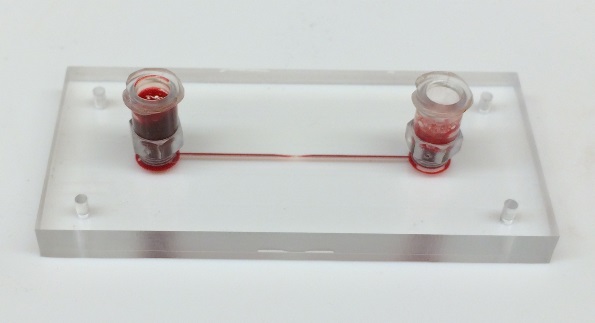A key aspect of translational research in the medical devices domain is migrating to thermoplastic polymers like PMMA (commonly referred to as acrylic). The fabrication of microfluidic channels involves two surfaces. One surface has the open channels and the features necessary for microfluidics. The second surface provides the closing interface almost like a lid. The challenge is to create a hermetically sealed interface between these two surfaces without using any adhesives. There are several bonding technologies like laser welding and ultra-sonic welding that are perfect for such applications, but they are expensive and time consuming. In this post, I will describe a low cost prototyping technique that delivers optically clear, hermetically sealed bonding for thermoplastic microfluidics.
Basic Concept
The thermoplastic surfaces to be bonded are sandwiched between two aluminum plates. The bottom plate is heated, and precise pressure is applied from the top. The performance of the bonding will depend upon
- Temperature of the hot plate
- Pressure applied
- Bonding Time
- Surface roughness of the bonding plates (important for optically clear finish)
Any issues like uneven bonding, bubbles, feature deformation can be overcome by adjusting the above parameters. More on these common mistakes, once I have covered the basic process.
Step 1: Surface preparation
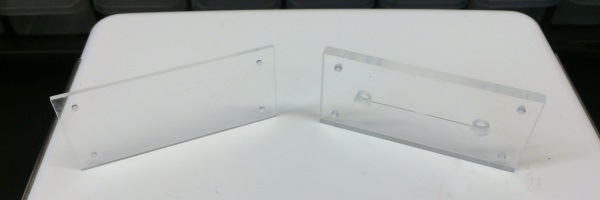
Both thermoplastic surfaces need to be clean, otherwise the unwanted particles will deteriorate the bonding performance. My cleaning process was:
- Rinse and gentle wipe using mineral spirits and shop towel
- Rinse in distilled water
- Rinse in Iso-propyl alcohal
- Rinse again in distilled water
- Blow dry with compressed nitrogen
Step 2: Bottom plate preparation
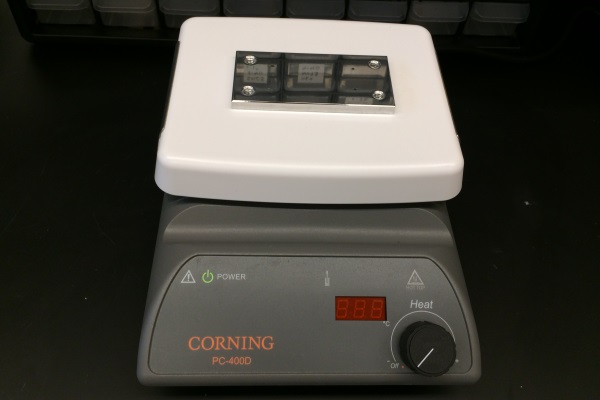
The bottom plate is heated using the hot plate as shown in the above image. During the bonding process, the hot bottom plate transfers all of its surface marks on the acrylic surface. Therefore it is important the bottom plate has mirror like finish. To obtain mirror like finish, I used sanding sheets (grit 400 followed by grit 1000). Finally, I applied aluminum polish shown in the image below.
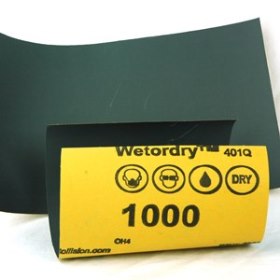 |
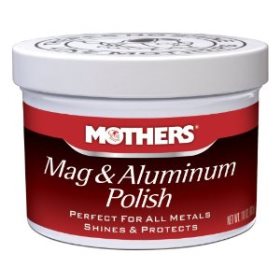 |
Step 3: Stack acrylic parts on the bottom plate
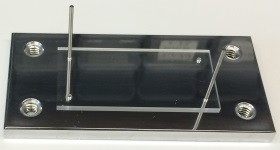 |
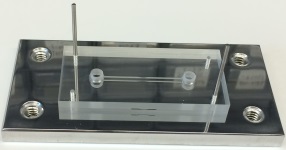 |
Place the closing side of the microfluidic cartridge on the bottom plate (left image). Then, place the part with open channels on top of the closing surface, as shown in the right image. For precise alignment of the two surfaces, I used dowel pins. These dowel pins also come in handy during ejection process, after the microfluidic part has been firmly bonded.
Step 4: Apply Pressure
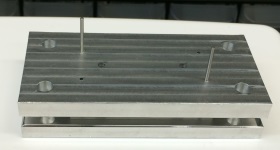 |
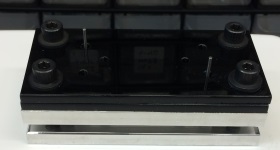 |
Place the top aluminum plate such that the acrylic parts to be bonded are sandwiched between two aluminum plates. Then use a torque wrench, or adjustable slip release torque screw driver to drive four screws. I used a torque setting of 80 in-oz using this precise screw driver from McMasterCarr
Step 6: Keep the hot plate at 170 deg C for 45 minutes
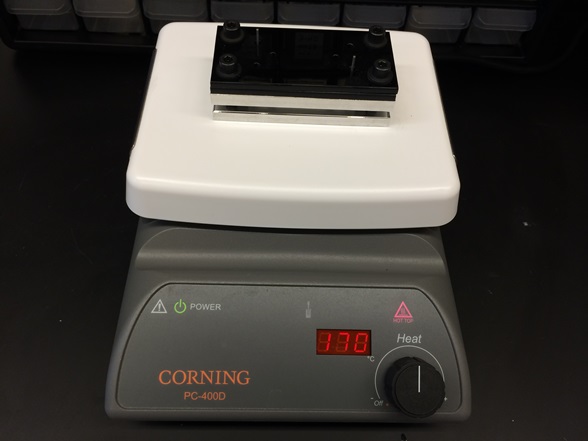
PMMA starts softening at 105 deg C (glass point). Further its structural integrity can be warranted till 180 deg C, and thus the decision to choose a temperature slightly lower than that.
Turn off the hot plate after 45 minutes, and allow the system to cool.
Step7: Unmount the aluminum plates
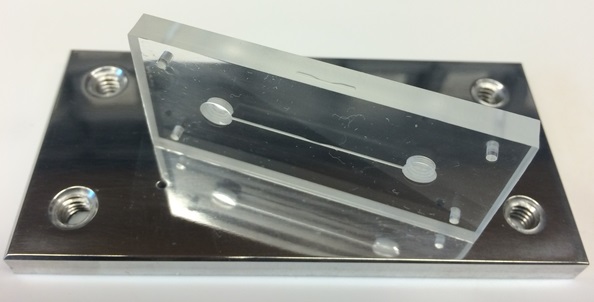
After unscrewing, you can put pressure on the dowel pins against any firm surface to eject the aluminum plates. You may now adore the bonded microfluidic cartridge. As you can tell from the above image, it is hard even to tell apart the seam. I carved an open channel on the edge, in order to conveniently measure the deformation with microscope.
Common Mistakes
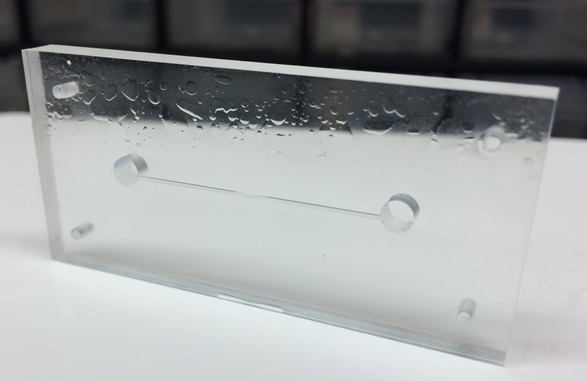
Bubbles on the Bonding Interface: This implies that the pressure distribution is not uniform. In my first iteration, I was applying pressure using only two screws – one each on the middle of the two short and opposing edges. The assumption was that with the cartridge being only 30 mm wide, two screws might be sufficient. I was able to resolve this issue, by moving to four screws, placed at each corner.
Cartridge sticking to bottom aluminum plate: This implies that the temperature is too much. Try lowering the temperature in 5 deg increments, till the problem goes away.
Feature deformation: This also happens when temperature is too much. Lower the temperature in 5 deg increments, till the problem goes away.
Optically Fuzzy : If you are getting cloudy optical interface, then the bottom plate surface finish needs improvement. For best results, the bottom plate needs to have mirror finish
Hope this helps. Happy bonding!
Special thanks to Christopher Phaneuf for pointing me towards thermal bonding process, and Marty Jacobson for his immense help in the machine shop.
